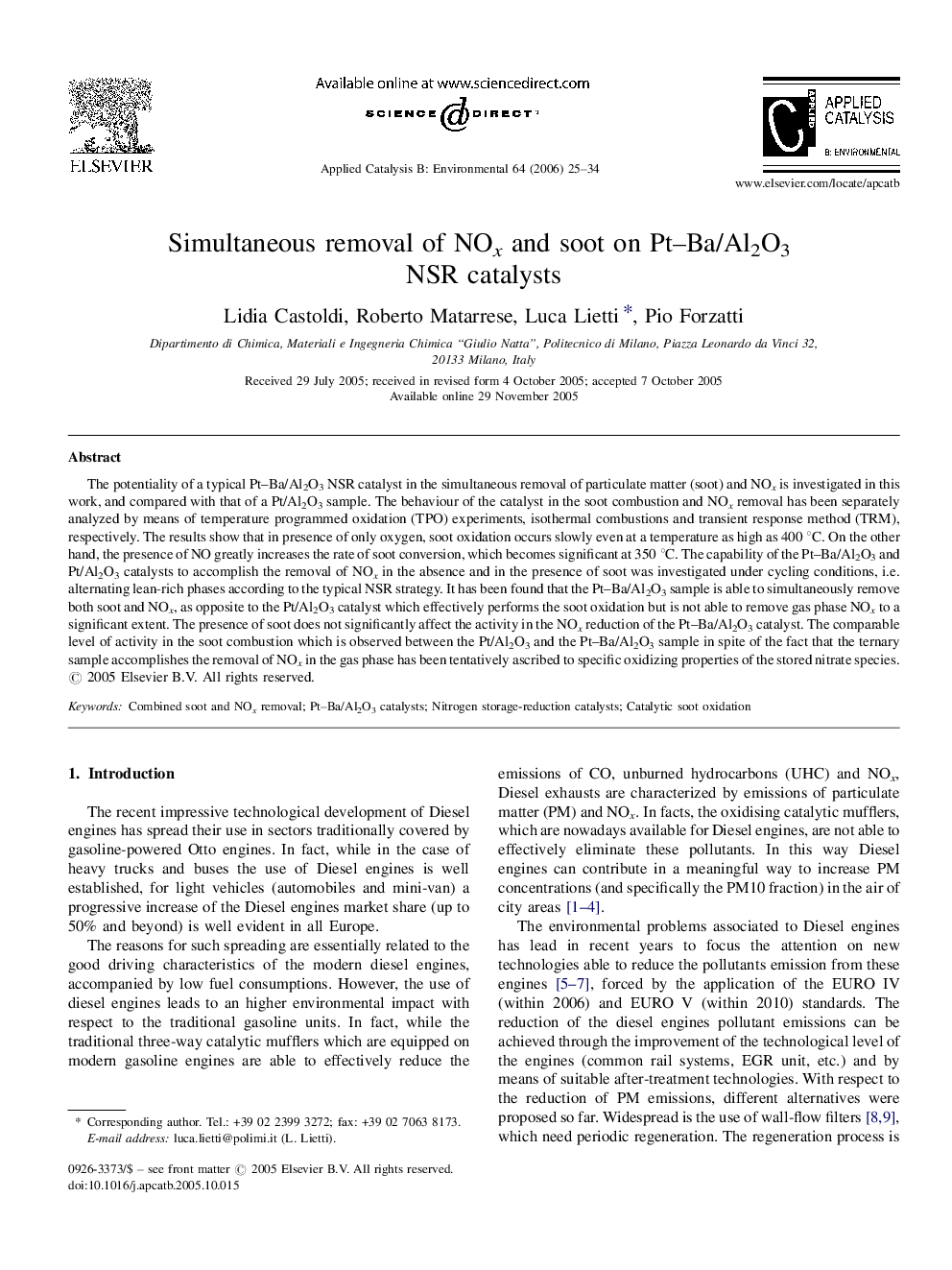| Article ID | Journal | Published Year | Pages | File Type |
|---|---|---|---|---|
| 48661 | Applied Catalysis B: Environmental | 2006 | 10 Pages |
The potentiality of a typical Pt–Ba/Al2O3 NSR catalyst in the simultaneous removal of particulate matter (soot) and NOx is investigated in this work, and compared with that of a Pt/Al2O3 sample. The behaviour of the catalyst in the soot combustion and NOx removal has been separately analyzed by means of temperature programmed oxidation (TPO) experiments, isothermal combustions and transient response method (TRM), respectively. The results show that in presence of only oxygen, soot oxidation occurs slowly even at a temperature as high as 400 °C. On the other hand, the presence of NO greatly increases the rate of soot conversion, which becomes significant at 350 °C. The capability of the Pt–Ba/Al2O3 and Pt/Al2O3 catalysts to accomplish the removal of NOx in the absence and in the presence of soot was investigated under cycling conditions, i.e. alternating lean-rich phases according to the typical NSR strategy. It has been found that the Pt–Ba/Al2O3 sample is able to simultaneously remove both soot and NOx, as opposite to the Pt/Al2O3 catalyst which effectively performs the soot oxidation but is not able to remove gas phase NOx to a significant extent. The presence of soot does not significantly affect the activity in the NOx reduction of the Pt–Ba/Al2O3 catalyst. The comparable level of activity in the soot combustion which is observed between the Pt/Al2O3 and the Pt–Ba/Al2O3 sample in spite of the fact that the ternary sample accomplishes the removal of NOx in the gas phase has been tentatively ascribed to specific oxidizing properties of the stored nitrate species.
